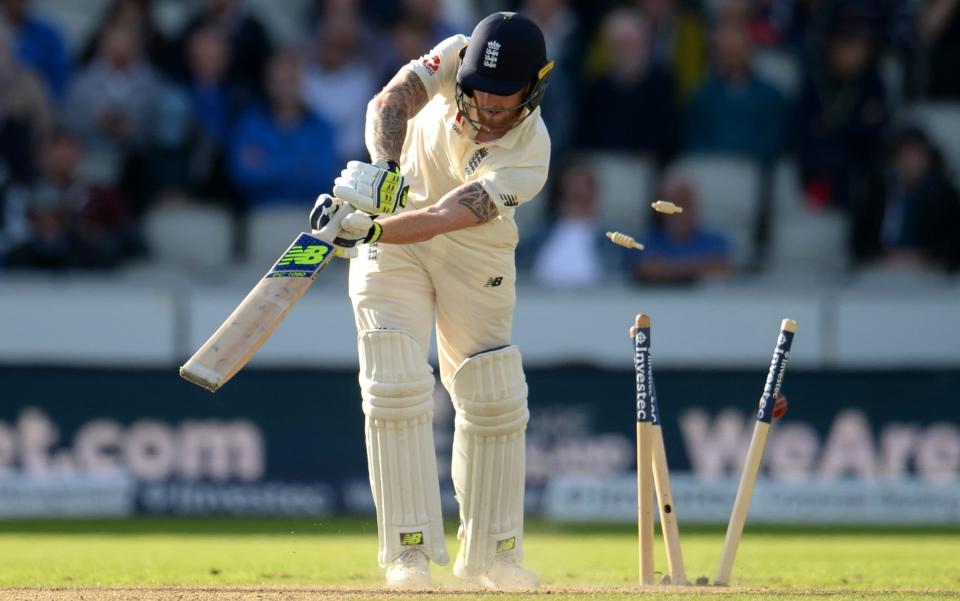Dukes balls will be back to their best this summer – and that is bad news for Bazball

Batsmen be warned: the owner of Dukes cricket balls is confident that his product will be back to its swinging, seaming best for the 2023 season after a Covid-related manufacturing “malfunction” last summer.
Dilip Jajodia is as certain as he can be – with a handmade product like a Dukes ball it is impossible to be absolutely certain – that he has rooted out the issue that saw Stuart Broad describe the batch of 2022 balls as “rubbish”.
Broad and James Anderson – who said there was “obviously something fundamentally wrong” last year – will be delighted, although England’s freewheeling, Bazballing batsmen might have cause for concern if the ball moves a little more laterally.
There were many contributing factors to England’s resurgence under Ben Stokes and Brendon McCullum last summer, and it would be wrong to attribute some brilliant batting solely to soft balls. But they did help, with balls going softer quicker, denying bowlers lateral movement, and allowing England – with Jonny Bairstow and Joe Root to the fore – to pull off a series of scintillating chases.
Jajodia has worked in the cricket ball trade for 40 years, and admits he has “never been busier” than last summer, as he tried to get to the bottom of the issue that saw balls go soft and out of shape more quickly than usual. After “thoroughly checking everything”, he got there: the leather, supplied by a tannery in Derbyshire, was the issue.
“I asked all the questions, and eventually it became clear that staff had been on furlough, some had been laid off,” he tells Telegraph Sport. “They had problems getting the right chemicals, they had to use substitute chemicals.
“There is a sequence that takes place. You put the leather in a pit, it sits there for x number of days at x temperature. That was all disrupted. They did admit that everything hadn’t gone to plan because of the covid closedown.”
An issue for Jajodia, of course, is that each ball is unique, made with a “delicate” process, and cannot be tested, because a single delivery means it is no longer new.
“The problem with leather is you can’t actually tell by just looking at it and feeling it,” he says. “You can do various tests, but it’s not until it gets whacked for 80 overs by professional cricketers, hitting sight screens and fences and all that, that you can realise there is an inherent weakness in the leather, and that’s what it was.
“The thing with a cricket ball is there are so many aspects to it, when you put it all together, you only need one aspect to be slightly out, for there to be a knock-on affect.
“It’s all integrated. You have the centre, lining, thread, glues, everything is constantly being checked and subject to a standard. That was the mystery.
When we first got the complaint I checked all the batch numbers, which I have all tracked. Everything was ok. The only item that we could not absolutely be 100 per cent was perfect was the leather because it was a substantial material that came from an outside source. Is there a failure in it? That’s what we had to ask. After a lot of questioning we got there.”
Jajodia has made some changes, in the hope of mitigating against future issues. Last summer, once the problem was identified, he kept balls in the milling process longer, and felt there were improvements.
This time he is “not pushing them through as fast as normal”, and triple-checking. He has ensured that he has 50 per cent more raw materials than he needs going through the system at any time, so that changes can be made.
The upshot is that “we are back to normal”. Jajodia, who hand selects balls for Test matches, adds with a smile: “I must confess they are looking good”.
“There is never a 100 per cent guarantee with a handmade product but we have done as many tests as we can,” he says. “Balls have gone out to counties, some have been used in indoor nets already and the feedback is that they sound like the original Dukes ball and seem fine.
“I could beat myself up and think that because we’ve had covid, why didn’t I ask more questions earlier? Perhaps with hindsight I should have done.
But what could I have done? There wouldn’t have been any other leather available even if I had identified the issue! We were in a very difficult position.”
While he does not deny that things were not right, Jajodia believes that, once the problem had been identified last summer, there was a degree of “gamesmanship” and perhaps confirmation bias seen at elite level, with players seeing issues with balls they once would not have, leading to frustrating delays.
The problems have done little to damage the brand’s global reputation, with more use in countries like Australia and Bangladesh than before. He will not, by the way, be drawn on the ECB’s decision to use machine-stitched red Kookaburra balls for two rounds in the County Championship this summer, but it does not take a genius to work out his view.
As he points out, “England did win six of their seven Tests last summer”, so that batch of Dukes suited them just fine. Whether this year’s does, remains to be seen.

 Yahoo Sport
Yahoo Sport 





































